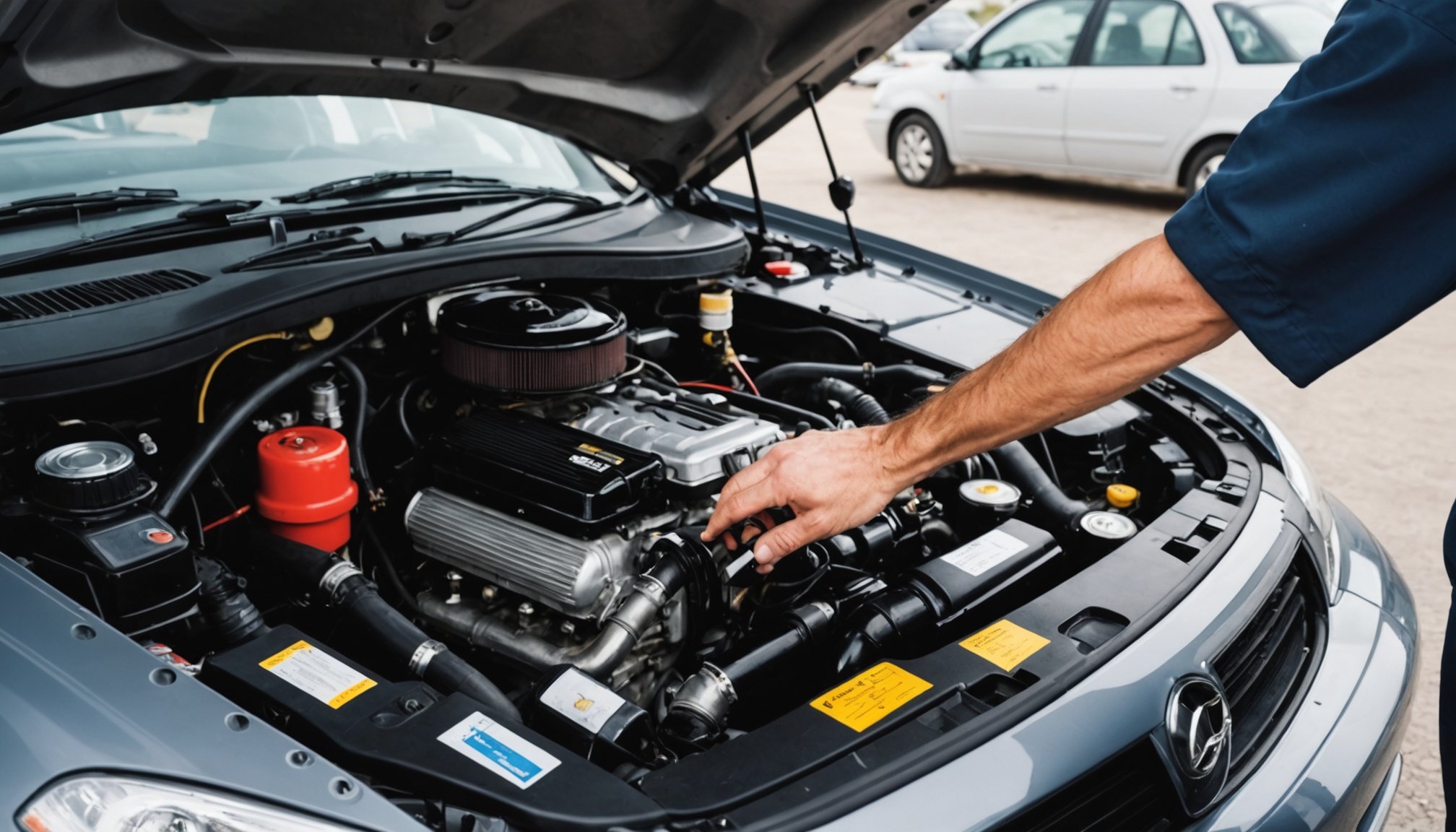Maintaining the fluids in your car is crucial for the lifespan and performance of your vehicle. But how exactly do you go about checking and replacing them? Fear not. This guide will enlighten and equip you with all you need to know about the subject. You don’t have to be a mechanic to understand your car’s needs. We will guide you through this process in a straightforward and digestible manner.
Checking Engine Oil
The engine is the heart of your car. The oil in your engine is its lifeblood, providing necessary lubrication to the various parts of the engine. Regularly checking your engine oil level is vital for maintaining the health and efficiency of your car.
Also to read : What are the rules for using dash cams in UK vehicles?
To check your engine oil, make sure your car is parked on level ground and has been off for a few minutes to allow the oil to settle. Open the hood of your car and locate the dipstick. Pull it out completely and wipe it clean with a rag or paper towel. Reinsert it fully and then pull it out again. Check the level of the oil on the dipstick.
If the oil level is between the two marks or holes on the dipstick, your engine oil level is fine. If it’s below the lower mark, it means your engine oil is low and needs to be replenished. Remember, the color of the oil can also indicate its condition. Dark, dirty oil should be replaced, while amber colored oil indicates that it’s still in good condition.
Also to discover : What is the difference between third-party and comprehensive car insurance?
Monitoring Brake Fluid
The brake fluid in your vehicle is responsible for transmitting the force of your foot on the brake pedal to the car’s brakes. It’s a crucial part of the vehicle’s braking system and, when low or contaminated, it can lead to brake failure.
To check your brake fluid, locate the brake fluid reservoir in the engine bay. The reservoir is usually transparent, allowing you to see the fluid level without opening it. It should be between the "MIN" and "MAX" lines. If the brake fluid is below the "MIN" line, it signifies that it’s time to top it off.
You should also check the color of the brake fluid. Clean brake fluid is usually amber in color, while dirty fluid is dark brown or black. If the fluid is dirty, it’s recommended to flush the system and replace with fresh fluid.
Inspecting Transmission Fluid
Your car’s transmission fluid is pivotal for keeping your vehicle moving smoothly. It lubricates and cools the moving parts in the transmission.
To check the transmission fluid, your vehicle should be running and warmed up. The process is similar to checking engine oil – locate the dipstick, remove it, wipe it clean, reinsert it, remove it again, and check the fluid on the dipstick.
Transmission fluid should be bright red, clear and should have a sweet smell when it’s in good condition. If it’s brown or has a burnt smell, it’s a sign that it needs to be changed.
Checking Coolant Level
The coolant in your car keeps the engine from overheating. Without it, your engine could overheat and cause severe damage.
To check the coolant level, locate the coolant reservoir in the engine bay. The reservoir is usually transparent, with ‘min’ and ‘max’ markings on the side. Make sure the coolant level is between these two lines. If it’s low, you’ll need to top it up with a mix of coolant and water. Remember, never open the coolant reservoir when the engine is hot as it is pressurized and can cause burns.
Power Steering Fluid Check
Finally, the power steering fluid makes it easier for you to steer your car. Low power steering fluid can lead to increased steering effort, squealing noises, or even total loss of steering.
To check this fluid, locate the power steering fluid reservoir under the hood. Most cars have markings on the reservoir indicating the fluid level. It should be between the ‘min’ and ‘max’ marks. If it’s low, top it up with the recommended fluid.
Remember, prevention is better than cure. Regularly checking the different fluids in your car and keeping them at the appropriate levels will help keep your car running smoothly, extending the lifespan of your vehicle. Always refer to your vehicle manual for specifics related to your car model.
Windshield Washer Fluid Inspection
Your car’s windshield washer fluid may not be directly linked to the performance of your engine or transmission, but it plays a crucial role in maintaining visibility while driving. Running out of washer fluid when you need it most can create dangerous driving conditions.
To check the washer fluid, open your car’s hood and locate the washer fluid reservoir, often marked with a water or windshield symbol. The reservoir is usually transparent or has a built-in gauge that allows you to check the fluid level without opening the cap. If the level is low, it’s time to refill the reservoir.
When refilling, use a windshield washer fluid that is suited to your local weather conditions. In colder regions, a fluid with antifreeze properties is advisable to prevent the liquid from freezing. In areas where insects and road grime are a problem, you might opt for a fluid with strong cleaning properties. Do not use regular water as it may freeze in frosty weather and does not have the same cleaning properties as washer fluid.
As always, remember to refer to your owner manual for any specific recommendations relating to your vehicle model. The manual is a treasure trove of information tailored to your car, providing invaluable guidance on routine maintenance and potential auto repair needs.
Regular Maintenance and Conclusion
Regular maintenance of the fluid levels in your car can save you from expensive and unnecessary auto repair bills in the future. Monitoring levels of engine oil, brake fluid, transmission fluid, coolant, power steering fluid, and windshield washer fluid should be a part of your routine vehicle checks.
When checking your car’s fluids, it’s not just about quantity but also quality. The color and smell of fluids like engine oil, transmission fluid, and brake fluid can provide important clues about the health of your car. Dark, dirty, or foul-smelling fluids are usually indicative of a problem and should prompt you to seek professional help.
To ensure the longevity and optimal performance of your vehicle, always refill or replace fluids with the recommended products. Using the wrong type of fluid can cause damage to your vehicle, leading to expensive repairs. Your owner manual is the best source of information on the correct types of fluid for your car.
In conclusion, it’s clear that maintaining the fluids in your car is not only essential for its performance but also for your safety on the road. With this guide, you should now have the knowledge to perform these checks yourself. However, if you are ever in doubt, don’t hesitate to seek help from a professional mechanic. Remember, when it comes maintaining your vehicle, it’s always better to be safe than sorry. Your car is a valuable asset, and with proper care and attention, it can serve you reliably for many years to come.











